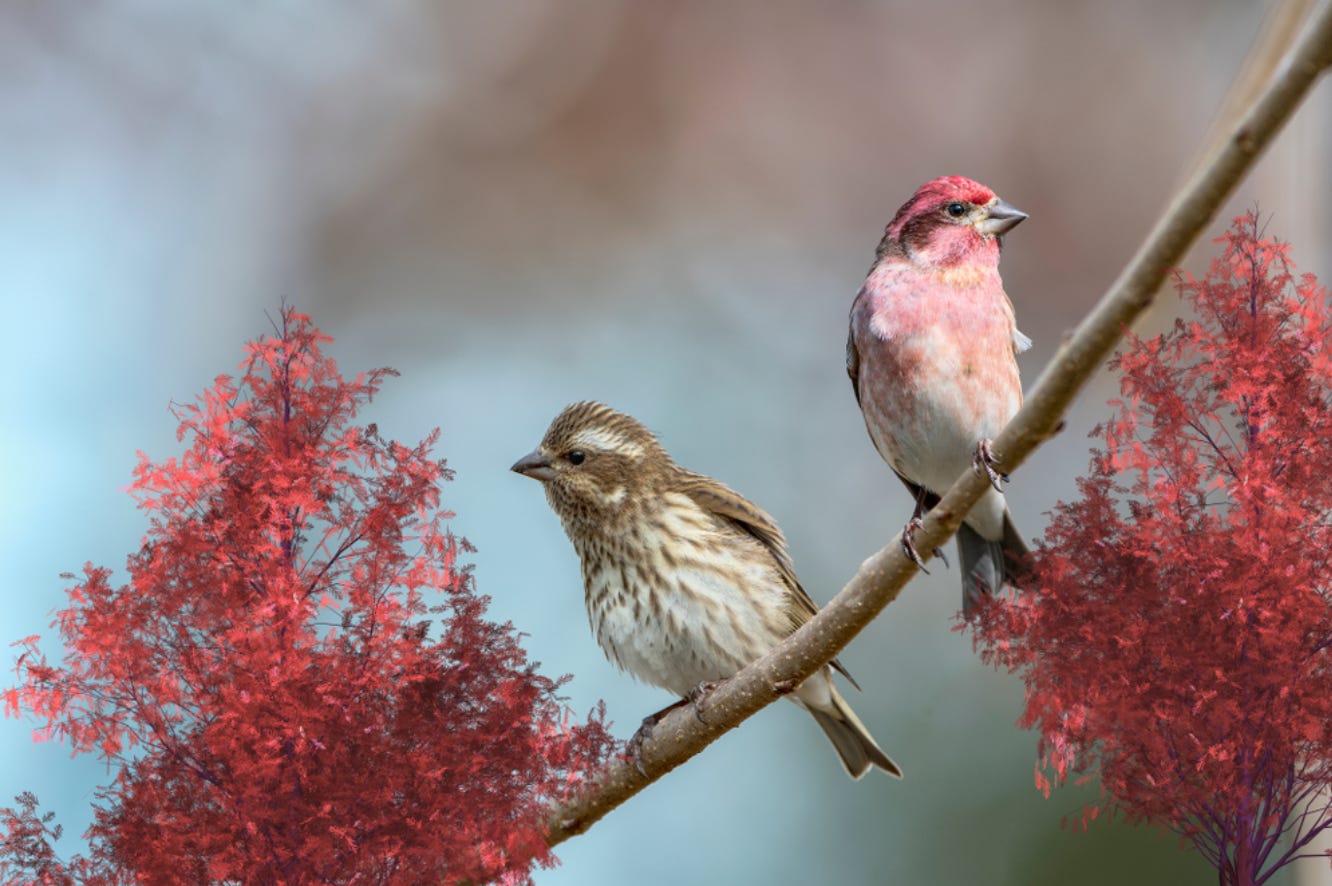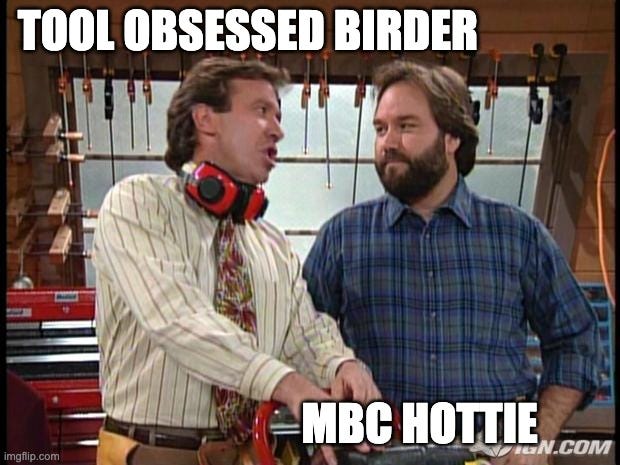MICROSEASON — OCT 21 - OCT 27
The Noticer's Monthly #33 — Public speaking, mast years, tool time rehash, and more
The following remarks were delivered by our ol’ buddy, Michael, who was invited by Lights Out Coalition to speak in favor of “Intro 1073”, the third and final piece of a package of bills entitled Flaco’s Laws. The bill would require New York City buildings to retrofit their windows with bird friendly material. More, including pics of the gathering, here
Hello, my name is Michael Lombardo. I organize McGolrick Bird Club.
Every Saturday morning in Greenpoint, in north Brooklyn, in a small, 9-acre, very urban-residential park, 100 plus Brooklynites go birdwatching.
This kind of turnout for birds may be surprising to laypeople. Not to me.
You see: a mere 5 years ago I did not care about birds. I was blasé about nature—got bored on hikes. I worked in the tech industry at the time, and had grown increasingly disillusioned with its business model where screen addiction equals corporate profit.
I read a book called How to Do Nothing by Jenny Odell, in which she suggests that noticing birds is an antidote to this so-called attention economy.
I was dubious. Birdwatching, to the uninitiated, is a punchline. But I was desperate to reclaim my brain. So, I walked outside with my senses turned up.
Not a minute into my walk, I noticed a bright orange and black bird I'd never seen before. I learned it was a Hooded Oriole, I learned that Hooded Orioles were common to every city in which I'd lived, including my hometown.
How was it, I wondered, that I could inhabit a place all my life, without noticing something so alive?
I tried to notice more, and discovered what every birdwatcher knows. That by using our innate animal intelligence in nature, even in the smallest park, something incredible happens: we become part of earth's story. In the same way that doomscrolling makes us dead, birdwatching, at long last, makes us alive. Makes us human.
We live in the greatest city in the world, with the greatest skyline in the world. Millions of humans eat, sleep, and start families in that skyline—in artificial cliff dwellings!
Humans can accomplish miracles. Yet that great skyline, raised by great New Yorkers, in a tragic example of non-noticing, happens to be in the direct path of a great and ancient and improbable and life honoring and already hazardous bird migration.
Polluted waterways, particulate laden airways—humans can and have, miraculously, successfully, taken corrective action when required. We can and have complemented proud human development with proud reverence for earth's story.
Now we must, at long last, correct our skyways, the ones polluted by glass windows that birds, in their ancient perfection, cannot see. We must do this, in the greatest city in the world, because what starts here, spreads. Noticing birds, retrofitting windows, being more human.
Thank you.
MICRO-SEASON OCT 21 - OCT 27
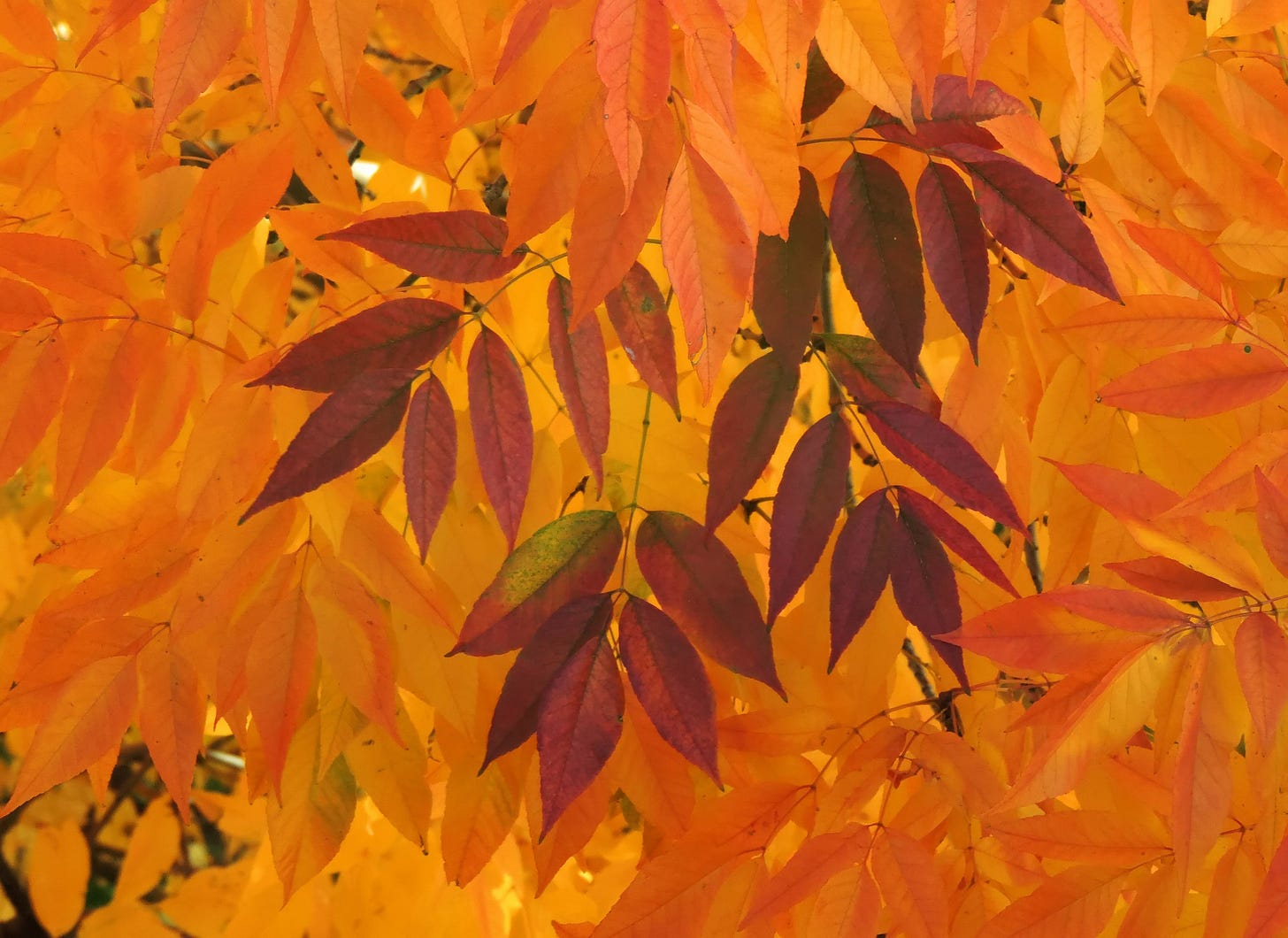
Current Japanese micro-season: "Crickets chirp around the door". As for McGolrick Park, New York City and perhaps even larger swathes of the eastern US, we notice—
Ash trees go yellow, red and bare · Acorns fall · Plane trees shed · First of season Purple Finch · Dark-eyed Juncos en masse
Acorns mean we’re in a mast year! One of the still great mysteries of arboreal science—irregularly occurring annual events when oak trees produce and drop a ton of acorns all at once
Which trees are ashes? Tap this map
BIRD REPORT
Who’d we notice in McGolrick Park this micro-season?
Purple Finch · Yellow-rumped Warbler · Cooper’s Hawk · Tufted Titmouse · White-breasted Nuthatch · White-throated Sparrow · Song Sparrow · Chipping Sparrow · Dark-eyed Junco · Swamp Sparrow · Eastern Phoebe · Hermit Thrush · Brown Creeper · Ruby-crowned Kinglet · Golden-crowned Kinglet · Downy Woodpecker · Red-bellied Woodpecker · Yellow-bellied Sapsucker · Northern Flicker · Red-tailed Hawk · Blue-headed Vireo · Northern Mockingbird · American Kestrel · Blue Jay · Common Grackle · American Crow · Rock Pigeon · European Starling · American Robin · House Sparrow · Mourning Dove
Note that some of the above birds, incl. the Purple Finch and Yellow-rumped Warbler, were seen wearing their “Female” or non-breeding plumage
MICRO-REHASH: TOOL TIME
WARNING: This section implicitly recommends screen usage. Our screens are otherworldly, transcendent, attention stealing, life ruining and deadly. If you want to do one good thing for your mental health today, you’ll hurl your glowing rectangle into the nearest river. Seriously, if you need help, check out these resources
Too many birders are obsessed with tools. Us McGolrick Bird hotties? Eat dirt, Tim. Besides a good pair of binoculars (we like these too), all you need are clear eyes or ears, plus, like, a full heart.
But before you go sprinting into the nearest park, senses on, butt-naked, consider this: a new birder’s practice can benefit greatly by occasional use of the below tools.
Merlin
Gist: Two killer features: Sound ID: Shazam for birdsong! + Explore: the easiest way to quickly find out what species are findable given a location/date. [iOS, android]
What we love: Sound ID is obvi dope. And Explore is the best way to get a comprehensive list of likely birds for any area—usually county-wise or equivalent—at any time. Examples:

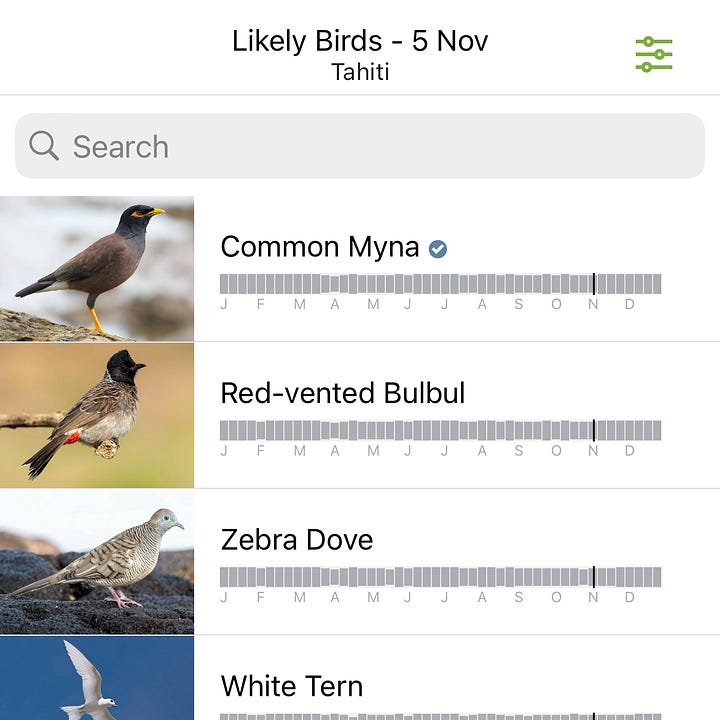
iNaturalist
Gist: This app is 🐐’d because A) Jenny Odell recommends it B) the photo ID feature (upload photo —> species name suggestion)—that covers all creatures, including plants—is the best around. [iOS, android]
What we’re into: Besides photo ID, we also use iNat to browse laypeople photos of nearby birds. What’s great about this approach is, unlike guides featuring professional photos or illustrations, you can get a hyper-local + realistic sense of how birds who’ve actually visited your hood actually look. (Get a taste with this custom view of McGolrick Park.)
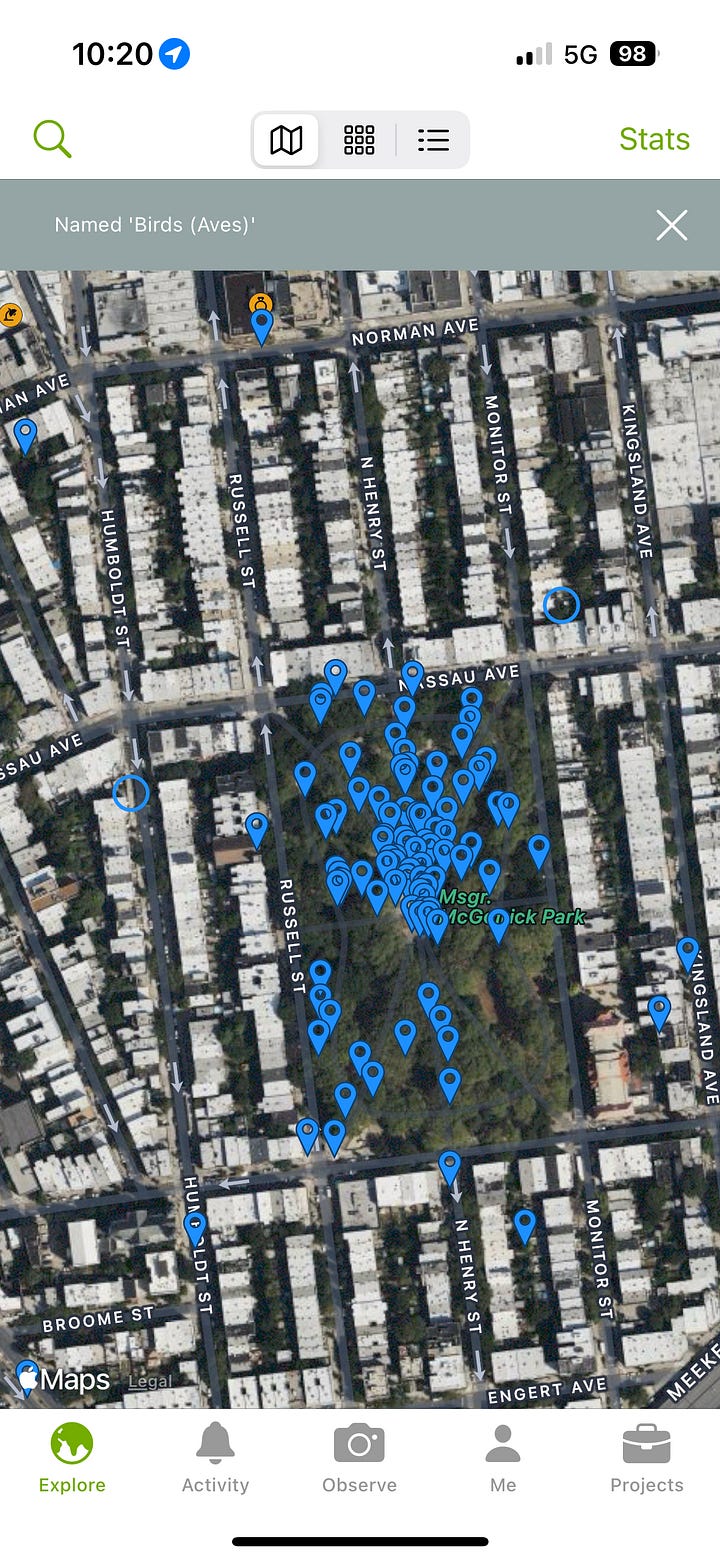

Sibley v2
Gist: Easily searchable app good for studying US bird species. Think Sibley Guide, but pocket-sized. NB: This is the only listed app that isn’t free. Costs 19 bucks, but is good for all, and great for novice→intermediate birders trying to step up their game. [iOS, android]
What we’re into: The app has a Similar species feature that shows easily confused species in a side-by-side view.
eBird
Gist: The canonical bird database by Cornell’s School of Ornithology. When folks say eBird, they’re referring to either:
The on-the-go app more experienced birders use to log noticed species
What we’re into: While we do use the app to log species seen at McGolrick Park, we highly recommend new birders browse the site for “hotspots,” or places with the most logged species. (You can do this for any location in the world!)
INSTRUCTIONS FOR THE ABOVE TOOLS
Merlin Sound ID—
Hear a bird? Tap Sound ID. You’re off!
Watch the app surface species’ names in realtime.
False positives, though very uncommon, do happen. So if you’re hearing an American Flamingo in North Brooklyn, get your grain of salt on
Merlin Explore—
Tap the Explore tab
Enjoy a clean, clickable bird overview of nearby birds, from most to least findable
Traveling? Daydreaming of travel? Need to ID a bird image texted by a farflung friend who knows you’re bird horny? Tap the filter icon at the top-right of the Explore page to adjust Location and Date.
If a bird photo is missing, tap the placeholder image then download the most relevant “packet”
iNaturalist local bird sightings:
Tap Explore
Tap 🔎
Search for Aves —> Tap Find organisms named Aves —> Tap Birds
Blue markers should pop up. You can click into those or toggle (top-middle) to grid and list views
Pay attention to dates—nearby birds may be seasonal
iNaturalist photo ID:
Tap Observe
Take a photo or Upload/Add one from your library
If uploading, make sure you set location (approximate is okay)
If using camera, do your best—zoom-in and/or crop
Tap What did you see?
A list of suggested species will appear. Tap the ℹ️ for more info and additional reference photos.
Once you find a good-enough match, tap the species —> then tap Share. Members of the iNaturalist community will review and verify your sighting
Sibley v2 Side-by-side feature:
Imagine you think you’re seeing a Magnolia Warbler. If you view that species in-app, then tap this icon—
—you’ll see this page:
Sibley is saying Are you sure you’re not seeing a similar species? Click into a similar species and you’ll see a side-by-side like this:
You can then decide whether your IRL bird has the Canada Warbler’s spectacles + necklace ,or the Magnolia’s zorro mask + front-length streaks.
eBird hotspots search:
Open ebird.org/hotspots
Type a location into the search field—page upper-right
The results will look like colored pins on a map—use the SPECIES OBSERVED key—page lower-right—to find the busiest (read: birdiest) hotspots. Example:
There’s of course an alternative, very simple way to find places to bird near you. Open Google Maps and just find the green. The parks. The wild. The bigger the green, the birdier the scene.




